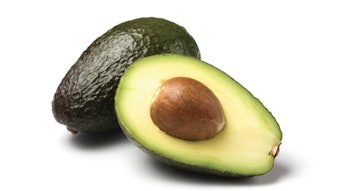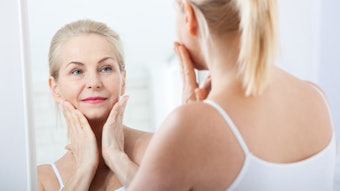Some of the most frequently asked questions about cosmetic ingredients during the past two years concern the safety of parabens as preservatives. These questions probably originate from a small study by Dabre et al.1 published in 2004 that showed the presence of parabens in the breast tissue of women who had diagnoses of breast cancer. In the study, 18 out of 20 women demonstrated the presence of parabens in their breast tissue. Almost immediately, the media and a few self-styled experts made the conclusion that parabens cause breast cancer and that cosmetics were the source of these parabens. Spa professionals are now concerned about this supposed relationship and it is important to present the information known about this topic so an intelligent evaluation can be made about using parabens.
What are parabens?
The term “paraben” is an abbreviation for para-hydroxybenzoic acid. Parabens are a family of estersa of para-hydroxybenzoic acid that differ at the para positionb of the benzene ring by various chemical substitutions. There are five widely marketed para-hydroxybenzoic acid esters: methyl, ethyl, propyl, butyl and benzyl. Parabens are antimicrobial preservatives used in foods, drugs, cosmetics and toiletries that are normally used in combinations containing two or more parabens and/or other preservatives.
Because parabens are esters of benzoic acid, thus the name “para + ben” (for benzoic acid), they end up in the body as benzoic acid, which is a natural constituent of many foods, including milk products. When ingested, benzoic acid is rapidly absorbed from the gastrointestinal tract and metabolized in the liver by conjugation with glycine, resulting in the formation of hippuric acid, which is rapidly excreted via the urine. To a lesser extent, benzoates applied dermally can penetrate through the skin. At one time, it was thought that parabens were not retained by the body, but a new study by Oishi suggests they can be retained. This study demonstrated that a portion of parabens can be absorbed and retained in human body tissues without hydrolysis by tissue esterases.2
Estrogenic activity of paraben
The entire controversy regarding parabens and breast cancer centers on the possible estrogenic activity of parabens, which was first described by Routledge and colleagues in 19983 and has subsequently been substantiated by several in vitro and in vivo studies. Estrogen has a benzene ring as its first cyclic structure—that is, a six carbon unsaturated ring known as an aromatic ring. Now, in order for a chemical to have estrogenic activity, it must bind to the estrogen receptor in a way that it will activate the receptor. This is an extremely important concept because some chemical agents are specifically designed to bind to a receptor in order to prevent the real hormone from activating the receptor. Some cancer chemotherapy is based on this concept.
The real question is this: Do parabens have an adequate estrogenic effect to disrupt the endocrine system and do bodily harm? To date, this question has not been answered by all the scientific studies examined. For example, parabens are 1,000–1,000,000 times less estrogenic than estradiol, the major estrogenic compound in the body. So, what level of parabens is safe and doesn't cause bodily harm? Consider that the amount of parabens used in cosmetics as a preservative is normally at levels of 0.1% concentration, but may go as high as 0.5%, which translates to 500 mg in 100 mL of product, which is between 34 oz, or 5 mg/mL (1/5 of a teaspoon). Next, how much of this paraben gets into the skin? Assume you use 2 mL of a product with 0.3% total paraben, you are applying 6 mg to your skin. Of this, about 30% will penetrate the skin, or approximately 2 mg, well below the no observed effect level (NOEL) level,c which is 810 mg per kg of body weight.
The estrogenic effects of paraben
After entering the skin, parabens are metabolized to para-hydroxybenzoic acid, but a small percentage remains as the original paraben. A study by Routledge et al.5 tested methyl-, ethyl-, propyl-, butyl- and 4-n-dodecylparaben, as well as para-hydroxybenzoic acid in the in vivo uterotrophic assayd and found that butylparaben was the most potent and methylparaben had the weakest estrogenic effect, while para-hydroxybenzoic acid had no activity. Methylparaben was approximately 2,500,000-fold less potent than 17ß-estradiol. The estrogenic effect increased with the attached ester group. All were significantly lower than 17ß-estradiol; ethylparaben was 150,000 times weaker, propylparaben was 30,000 times weaker and butylparaben 10,000 times weaker.4, 5
This means that, according to this test, when you apply 1 mg of estradiol to your skin, you would need from 10 g to 2.5 kg (approximately 5 lbs.) of methylparaben to get the same effect. This and other studies show that parabens have very weak estrogenic effects.
The in vivo estrogenic effects of parabens have been tested in uterotrophic assays employing either immature or ovariectomized mice and rats after oral, subcutaneous or dermal administration.6 Methylparaben at doses up to 800 mg/kg per day for three days had no effect in rats and mice following oral or subcutaneous administration.11 Similarly, ethylparaben and propylparaben given orally or subcutaneously to mice at doses up to 100 mg/kg per day for three days were inactive. Oral administration of butylparaben to rats and mice at doses up to 1200 mg/kg per day for three days had no uterotrophic effect, whereas subcutaneous administration of doses between 400 and 800 mg/kg per day significantly increased uterine wet weights in immature rats.7 All of these numbers indicate that it takes a lot of paraben, well beyond the normal use level, to get an estrogenic effect.
Multiple studies have been done in order to determine paraben effects on the reproductive organs of the male offspring of rats and mice. Some investigators noticed the numbers of sperm cells were reduced, impaired spermatogenesis was observed, and reduced cell motility was noted in the male offspring of rats that had been dosed subcutaneously with 100 mg and 200 mg of butylparaben/kg from gestation day six to postnatal day 20. This dosage is very high and since it was injected, it cannot be compared to topical cosmetics.8–13 In these studies, methylparabens were essentially without effect, while propylparaben had an effect above the lowest dose (10 mg propylparaben/kg body weight/day), which might be considered a lowest observed adverse effect level (LOAEL) for propylparaben. For example, an average male weighing 176 lbs (80 kg) would need more than 800 mg of parabens per day. When applying a cosmetic product that contains 0.4% total parabens, or 400 mg, he would need to use at least two whole bottles per day to get 800 mg of total exposure. Assuming that even 50% of the parabens were absorbed into the skin, only a small amount of that quantity would remain as intact parabens, therefore more than four bottles of 100 mL each would be needed each day.
Parabens and breast cancer
The following is a direct quote from the U.S. Food and Drug Administration (FDA): “FDA is aware that estrogenic activity in the body is associated with certain forms of breast cancer. Although parabens can act similarly to estrogen, they have been shown to have much less estrogenic activity than the body’s naturally occurring estrogen. For example, a 1998 study (Routledge et al., in Toxicology and Applied Pharmacology) found that the most potent paraben tested in the study, butylparaben, showed from 10,000- to 100,000-fold less activity than naturally occurring estradiol (a form of estrogen). Further, parabens are used at very low levels in cosmetics. In a review of the estrogenic activity of parabens, (Golden et al., in Critical Reviews in Toxicology, 2005) the author concluded that, based on maximum daily exposure estimates, it was implausible that parabens could increase the risk associated with exposure to estrogenic chemicals.
“FDA believes that at the present time there is no reason for consumers to be concerned about the use of cosmetics containing parabens. However, the agency will continue to evaluate new data in this area. If FDA determines that a health hazard exists, the agency will advise the industry and the public, and will consider its legal options under the authority of the FD&C.”14
This is an example of flawed research. There are a lot of articles and references to antiperspirants causing breast cancer.15 Here are a few:
Claim. Underarm shaving enhances the ability of cancer-causing substances to get into the skin. These substances keep the lymph nodes from removing cancer-causing toxins from the breasts.
Truth. In 2002, a very well-designed epidemiological study compared 813 women with breast cancer and 793 women without breast cancer, and it concluded that there was no relationship between breast cancer risk and antiperspirant use, deodorant use or underarm shaving.16 Individuals who believe antiperspirants and underarm shaving will cause cancer often quote the paper by McGrath who did not use a control group in the study.15
Claim. Breast cancer occurs most often in the upper outer quadrant. This area is closest to the antiperspirants in the axilla, therefore they must cause breast cancer.
Truth. It is known that 50% of breast cancers occur in the upper outer quadrant. This is because most breast tissue is located in this quadrant, since breast quadrants are not of equal size. The nipple, for example, is not in the true center of the breast. A large amount of breast tissue, called the “axillary tail” extends toward the underarm so that the number of breast cancers in the upper outer quadrant is proportional to the amount of tissue in that area.17 This is a type of error some research workers make called a post hoc ergo propter hoc fallacy. It means “after this therefore because of this.” It is similar to concluding that because light comes through a window, the window is the cause of the light.
An even more convincing study is that by Perkins et al. in which the investigators studied 419,935 cases of breast cancer in the United States and found that there was only a 5% greater incidence of cancer in the left breast than the right breast. Tumors in the upper outer quadrant accounted for 1/3 of of all breast cancers. An interesting finding was that cancers occurring in the lower quadrants were 10% more likely to occur in the left breast than in the right breast.
Considering that these investigators looked at the contribution of race, ethnicity, age, histology, stage and location to laterality indicates that there are many unknown factors that contribute to laterality. They concluded that although the incidence of breast cancer being higher in the left breast did not apply to cancers in the upper outer quadrant, which contradicts the report of McGrath.18
Claim. Because men do not usually shave their underarms, the hair in the underarms prevents antiperspirants from causing breast cancer.
Truth. Breast cancer in men is rare; about one incidence of male breast cancer to 140 incidences of female breast cancers. It occurs more often in males who have a family history of breast cancer in its female members. Obesity and being overweight are conditions associated with cancer.
Phytoestrogens are substances from plants that have estrogen-like qualities. Soybeans, clover and strawberries all contain phytoestrogens. It is rare to read about these items when parabens are discussed, yet they are considerably more potent than parabens in terms of estrogenic effect. Most scientific opinions about phytoestrogens are favorable since substantial research indicates that they have great potential for health benefits. Asian diets, which are much higher in phytoestrogens than Western diets, seem to be associated with a lower risk of breast, prostate and colon cancers, and a reduced incidence of heart disease and osteoporosis. These findings suggest that there may be some benefits to the intake of weak estrogenic substances. The lesson here is that you must look well into a subject that has a significant effect on health before making a decision as to whether something is beneficial or harmful.
Conclusions
At the present time, the scientific pundits find no evidence to support the claim that parabens in cosmetics—at the approved use level—cause cancer. Not a shred of evidence exists to link parabens as a cause of cancer. No studies have been presented to show that normal use of cosmetics containing parabens is harmful. More than 10,000 cosmetic products contain parabens and millions of people use these products every day. Considering this, a significant increase in many types of cancer should have occurred during the past 20 years, when, in fact, the incidence rates of several cancers have decreased, including those of the breast, stomach, lung, colon, rectum and cervix.
FOOTNOTES
a. Esters are compounds that result from combining an acid and an alcohol.
b. "Para" is a term applied to a benzene ring when one group is attached to the No. 1 carbon and a second group is attached to the No. 4 carbon.
c. NOEL is the highest dose at which no adverse effects were noted in test animals.
d. This test measures the increase in the weight of the uterus when exposed to estrogen-like material. Rats are usually used in this assay.
REFERENCES
1. PD Darbre, Aljarrah, R Miller, NG Goldham, MJ Sauer and GS Pope, Concentrations of parabens in human breast tumours. J Appl Toxicol (24), 5–13 (2004)
2. The European Food Safety Authority, Opinion of the Scientific Panel on Food Additives, Flavourings, Processing Aids and Materials in Contact with Food on a Request from the Commission Related to Para-hydroxybenzoates E 214–219 (13 July 2004)
3. EJ Routledge, J Parker, J Odum et al, Some alkyl hydroxyl benzoate preservatives (parabens) are estrogenic. Toxicol Appl Pharmacol (153) 12–9 (1998)
4. T Okubo, Y Yokoyama, K Kano and I Kano, ER-dependent estrogenic activity of parabens assessed by proliferation of human breast cancer MCF-7 cells and expression of ER? and PR. Fd Chem Toxicol (39) 12251232 (2001)
5. RM Blair, H Fang, WS Branham, BS Hass, SL Dial, CL Moland, W Tong, L Shi, R Perkins and DM Sheehan,
The oestrogen receptor relative binding of 188 natural and xenochemicals: Structural diversity of ligands. Toxicol Sci (54) 138–153 (2000)
6. European Commission Health & Consumer Protection Directorate, General Directorate C, Public Health and Risk Assessment C7, Risk assessment SCCP/0873/05
7. Department Tox and Risk Assessment, Institute of Food and Veterinary Research (Sept 2004) JCL
8. JS Fisher, KJ Turner, D Brown and RM Sharpe, Effect of neonatal exposure to estrogenic compounds on development of the excurrent ducts of the rat testis through puberty to adulthood. Environ Health Perspect 107(5) 397–405 (1999 May)
9. KS Kang, JH Che, DY Ryu, TW Kim, GX Li and YS Lee, Decreased sperm number and motile activity on the F1 offspring maternally exposed to butyl p-hydroxybenzoic acid (butylparaben). J Vet Med Sci 64(3) 227–235 (2002)
10. BL Song, HY Li and DR Peng, In vitro spermicidal activity of parabens against human spermatozoa. Contraception 39(3), 331–335 (1989)
11. S Oishi, Effects of butylparaben on the male reproductive system in mice. Arch Toxicol (76) 423–429 (2002)
12. S Oishi, Effects of propylparaben on the male reproductive system. Fd Chem Toxicol (40) 1807–1813 (2002)
13. S Oishi, Lack of spermatotoxic effects of methyl and ethyl esters of p-hydroxybenzoic acid in rats. Fd Chem Toxicol (2004)
14. Parabens, FDA/Center for Food Safety & Applied Nutrition, hypertext updated March 24, 2006
15. KG McGrath, An earlier age of breast cancer diagnosis related to more frequent use of antiperspirants/deodorants and underarm shaving. European Journal of Cancer Prevention (12) 479–485 (2003)
16. DK Mirick, S Davis and DB Thomas, Antiperspirant Use and the Risk of Breast Cancer. Journal of the National Cancer Institute (94) 1578–1580 (2002)
17. National Cancer Institute, Antiperspirants/Deodorants and Breast Cancer: Questions and Answers (October 2004): www.cancer.gov/cancertopics/factsheet/Risk/AP-Deo (Accessed Jan 30, 2006)
18. CI Perkins, J Hotes, BA Kohler and Howe HL, Association between breast cancer laterality and tumor location, United States, 1994–1998. Cancer Causes Control (15) 637–6445 (2004)










